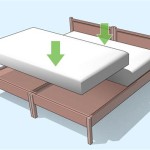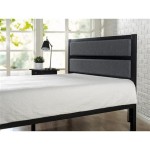What Are The Safest Bunk Beds?
Bunk beds offer a space-saving solution for bedrooms, particularly when accommodating multiple children. However, safety should be paramount when choosing a bunk bed, as falls and other accidents can occur. This article delves into the essential safety features to consider when selecting a bunk bed.
Sturdy Construction and Materials
The foundation of a safe bunk bed lies in its construction and materials. Look for beds crafted from durable hardwoods like maple, oak, or cherry, as they offer superior strength and stability. Avoid beds made from softwoods like pine, which can be prone to warping or breaking over time. Ensure the frame is robust and well-constructed, with reinforced corners and sturdy slats to support the mattress.
Pay close attention to the weight capacity of the bunk bed, ensuring it can safely accommodate the weight of the intended users. The weight capacity should be clearly stated by the manufacturer, and it is crucial to select a bed exceeding the weight of the individuals sleeping on it. This ensures the bed can withstand the pressure and prevent accidents.
Safety Features to Consider
Beyond the construction, numerous safety features are crucial for bunk beds:
Guardrails
Guardrails are essential for preventing falls from the top bunk. Ensure the guardrails are tall enough, typically at least 10 inches high, to prevent children from rolling out. They should be securely attached to the frame, and consider beds with guardrails that extend the full length of the top bunk to offer maximum protection.
Ladder Safety
The ladder is another critical safety element. Choose a ladder with sturdy steps and a handrail for added stability. The ladder should be securely attached to the bunk bed to prevent it from moving or collapsing while in use. Ensure the steps are wide enough for comfortable climbing and descending, reducing the risk of slips and falls.
Spacing and Clearance
Adequate spacing between the top and bottom bunks is essential for ensuring sufficient headroom and preventing accidental bumps or injuries. There should be at least 27 inches between the bottom of the top bunk and the top of the bottom bunk, allowing ample space for sitting up and movement. Additionally, ensure there is enough clearance around the bed for safe access and movement, especially when making the bed.
Mattress Considerations
The mattress is an integral part of a safe bunk bed. Choose a firm, supportive mattress that fits snugly within the frame and does not create gaps or overhangs. Avoid using waterbeds or mattresses with significant bounce, as these can increase the risk of falls. Consider using mattress protectors to prevent accidents from spills or leaks.
Inspection and Maintenance
Even with the safest bunk bed, regular inspection and maintenance are vital for ensuring its longevity and safety. Periodically check for loose screws, wobbly joints, or damaged parts. Tighten any loose connections and address any damage promptly to prevent accidents. Keep the bed clean and free of clutter to reduce tripping hazards.
Conclusion
Choosing a safe bunk bed is paramount for protecting children and ensuring their well-being. By prioritizing sturdy construction, essential safety features, and regular maintenance, parents and caregivers can create a safe and enjoyable sleeping environment for their children.

How Safe Is Your Bunk Bed Do The Rails Meet Regulation Standards

Guide To Bunk Bed Safety Cuckooland
Bunk Bed Safety Guide Dreams

Are Loft Bunk Beds Safe For Kids Toddlers Sleep Advisor

Top Safe Kids Bunk Beds

Everything Pas Should Know About Bunk Beds Cuckooland

Top Safe Kids Bunk Beds

Are Loft Bunk Beds Safe For Kids Toddlers Sleep Advisor

Bunk Bed Safety Guide Dreams







